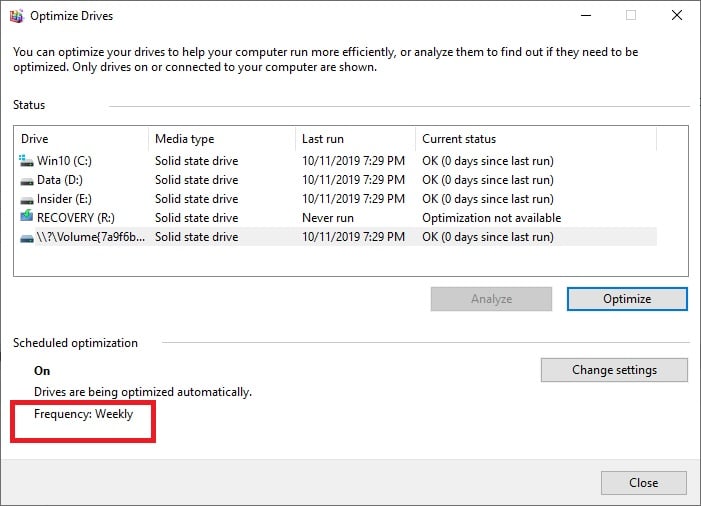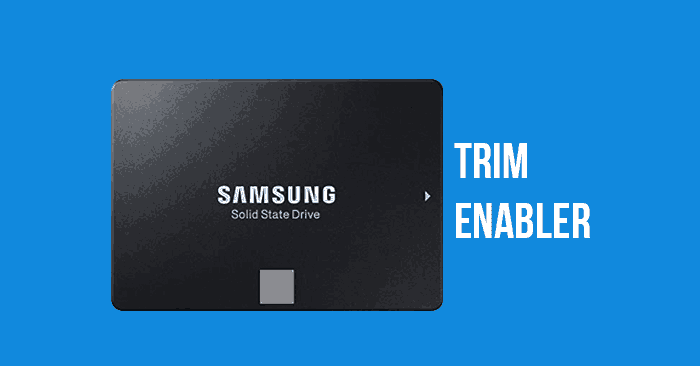
Right-click "Command Prompt" and choose "Run as administrator". Press Windows + X keys, click "Search" and type cmd in the Search box. If you are not sure about whether TRIM is in use, you can check if TRIM is enabled first. You can check and manage the TRIM function on your SSD with the help of Command Prompt. Therefore, you must check if TRIM is enabled regularly on your computer. But it may be disabled by mistake or via a third-party tool. Normally, TRIM is enabled on SSDs by default.
#TRIM ENABLER SSD HOW TO#
If the SSD TRIM is disabled, follow to learn how to enable it on Windows 10/8/7. To do so, follow the guide below to check if TRIM is enabled on your SSD. How often should the TRIM be enabled on SSD? To always obtain high performance with fast reading and writing speed on your SSD, it's advised that you always turn on TRIM. In a word, TRIM can greatly improve the performance of your SSD and extend its lifespan. By doing so, the SSD's controller can manage the storage space more efficiently and greatly improve the data reading and writing speed on SSD. TRIM on SSD (Solid-State Drive) is an Advanced Technology Attachment command that tells the SSD to erase data blocks when they are no longer in use. Not as clear cut as the Crucial statement but the bold sentence implies Active Garbage Collection is sufficient.About SSD TRIM, Everything You Need to Knowīefore you start enabling or disabling TRIM on SSD, here is some basic information that we think you should know: My most important external USB SSD is a 4TB Crucial X6.

Not as clear cut as the Crucial statement but the bold sentences imply Active Garbage Collection is the main tool doing the job. TRIM allows the OS to inform the SSD which data is no longer valid, allowing the SSD to skip over invalid data when performing Garbage Collection". The space in which it resides is simply marked as “free space” that may be used later.īy default, the OS doesn't let the SSD know which data is now free. When the OS “deletes” data, the data does not actually go anywhere. TRIM helps to make Garbage Collection more efficient by preparing invalid data for deletion. "TRIM is a facility by which the OS can notify the SSD when data is either marked for erase or no longer valid. I also have Samsung T5 and T7 and the only statement I can see from Samsung is in their FAQ, where they say: All Crucial SSDs are designed and tested assuming that they will be used without Trim". But if your operating system doesn't support Trim, it's not a disaster. Trim and Active Garbage Collection are useful tools that can benefit the speed, function, and longevity of your SSD. Perhaps you think macOS only issues TRIM commands during startup? If so, why? There are some combinations of operating system and filesystem where TRIM is not used on the fly to mark deleted data as deleted, but as far as I know macOS and HFS/APFS aren't one of them.Ĭlick to expand.My most important external USB SSD is a 4TB Crucial X6. Without TRIM, it's far more likely for the drive to need to pause user I/O requests while it does some GC. TRIM's relationship to GC is that it reduces how much GC a drive needs to run, and makes it more likely that the drive can mostly run GC during idle periods. It's a self-initiated maintenance task required in any SSD which both uses NAND flash memory as its storage and presents itself as a block storage device with blocks smaller than the NAND erase block size. Garbage collection is semantically invisible to every layer above the SSD itself. There's no command macOS can issue to tell a drive "do some GC now".

The reason I used scarequotes is that what you wrote doesn't make sense, because SATA and NVMe do not even directly recognize the concept of SSD GC. Click to expand.This is the first time I've ever heard anyone claim that macOS only "runs garbage collection" on startup.


 0 kommentar(er)
0 kommentar(er)
